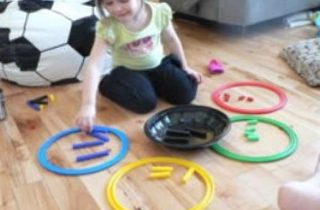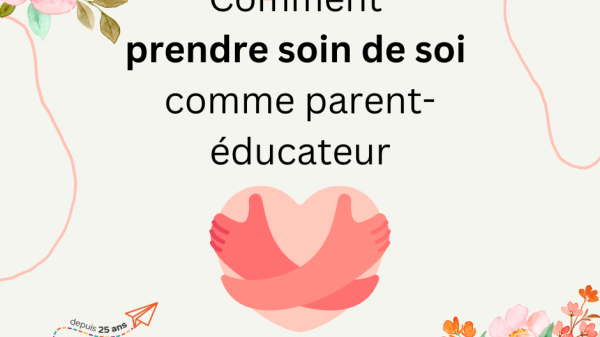Playing with colors

The learning of colors includes several steps: the association of two identical colors, the name of colors and a little later, the concept of mixing colors.
There are a multitude of games to work on the concept of colors. Here are some ideas!
Associations WITH a starting reference
Colored glasses? Bowls? Why not fill them with pom-poms, buttons or pipe cleaners of the same color? For fun, use a variety of filling tools such as tongs, a spoon, a straw to suck on (pay attention to the child’s age and the size of the pieces), a funnel, etc.

Place solid colored foam mats on the floor. Give the child a variety of colored objects to place on the correct mat. Observe your child’s sorting skills. It may be easy to put a blue circle with another blue circle, as the child may be using shape and not color. Avoid objects that are too similar in shape.
Use colored hoops and blocks. Have the child put the blocks in the correct hoop. For older children, overlap two hoops to create a multi-colored area (e.g., a blue block with green designs).
Associations WITHOUT starting reference
Separate small items into compartments. You can use an egg carton or a muffin tin, and give the child pom poms.

Take advantage of the color theme to offer the child to do their colorful grocery shopping. Line up plastic food items or cut out pictures from a circular, then have the child fill their basket according to the color named. Red: an apple, a container of ketchup, etc. Green: grapes, broccoli, etc.
Create colorful meals by coordinating plates, utensils and glasses in the same color. Why not use the color of your sweater or pants? If it’s hot, make ice cubes with water and dye, then add the right color ice cube to the chosen glass!
Name of colors
Name the color of an object whenever possible: “Lend me the green pencil”, “You’re wearing a blue sweater”, “Here! A red ball.”
Have fun using the concept of a search and find game to pick up toys.
“Look for the blue toys and put them away. ” “Look for the green toys and put them away. “
Associate each color with a mental image or smell. When the child can’t remember the color, say “green like the grass” or “yellow like the sun”.
You can create a texture album for children who are more sensory: cotton ball for white, grass for green, etc.
Use a classic game like Twister to work on the name of the colors. Make an age-appropriate version: “put your hand on a green circle”, “go put your toy on a blue circle”, etc.
Mix of colors
A fairly classic experiment that is easy to do with children. Place 6 glasses in a circle. Fill the first glass with water and add a few drops of yellow food coloring. Pass a glass, then put water and blue, pass a glass then put water and red. Create lengths of rolled paper towels, then insert them from one glass to the next (one glass of colored water/one empty, one empty/one glass of colored water). Over time, the paper towels will absorb the colored water and move it to the next glass. Since the empty glasses will have two rolls of paper towels, from two colors of dye, a mix will occur and you will get orange, green and purple.

You can also try this experiment with a white carnation in colored water. The stem will absorb the water and the color, and the petals of the flower will become colored.
Another version for little ones would be to dip one hand in red paint, then the other hand in white paint. The child will make a handprint of each color on a piece of paper and then rub their hands together. The red and white will mix to create pink paint. Add a new pink handprint to the paper. Repeat with other colors!
Learning colors is done quite early for children, but it is not rare that mix-ups persist a little longer. Color your life, name the colors that surround you and, above all, don’t be afraid to see “life in pink” with your children!
The opinions expressed in this article are those of the authors and should not be interpreted as reflecting the position of AQED.



